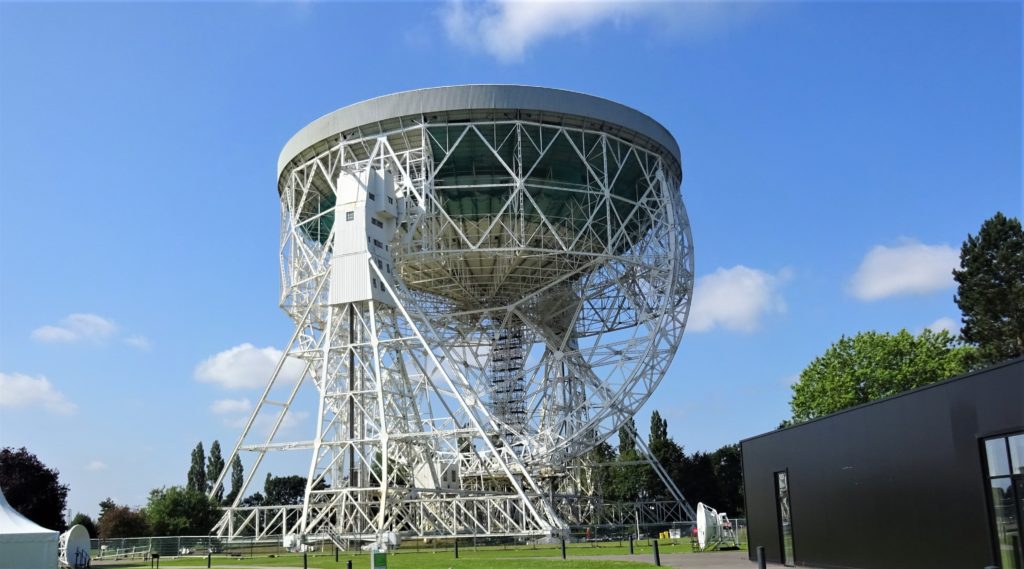The world’s first radio telescope
by Scott Dutfield · 16/06/2020
How Jodrell Bank Observatory was used to prove Einstein’s theories and even spy on the Russians

Situated 30 kilometres south of Manchester, England, is a site dedicated to exploring the depths of space and enabling us to comprehend what lies beyond our planet. Home to four active radio telescopes, Jodrell Bank is owned by the University of Manchester and is best known for being the site of the Lovell Telescope.
This telescope is named after astronomer Bernard Lovell, who founded Jodrell Bank in 1945. Lovell discovered the quiet site, away from any radio interference, while looking for the perfect spot to study cosmic rays.
One of its first findings was in December 1945. Lovell’s team detected echoes; not from cosmic rays but from shooting stars. This led to the discovery that meteor trails leave behind dust particles from comets orbiting the Sun.
Further use for the observatory came during times of international tension, when keeping tabs on what was going on in the sky had added value. Throughout the Cold War, Jodrell Bank was involved in tracking US attempts to overtake the Russians in the space race.
Since that early discovery, hundreds of scientists and engineers have worked in Jodrell Bank. Its extensive findings include discovering gravitational lenses. This new class of space object showed the warping of space-time around them, proving the theories of Albert Einstein over half a century before.
Today, the observatory is a leading radio astronomy facility and recently gained world heritage status on 7 July 2019, highlighting its importance in assisting our understanding of the universe.
The Lovell Telescope
Completed in 1957, the Lovell Telescope was the largest telescope in the world.
The distinctive structure was built by Bernard Lovell and engineer Charles Husband. The telescope is used to survey radio emissions from other galaxies, as well as investigating meteors.
Days after the Lovell Telescope was assembled, it was used to track the missile that carried Sputnik 1 into orbit. The Ministry of Defence also secretly used it as a nuclear missile tracking station.
The Lovell telescope is currently the third-largest steerable radio telescope in the world, with a diameter of 76 metres and a mass of 3,200 tons.
This article was originally published in How It Works issue 129, written by Ailsa Harvey
For more science and technology articles, pick up the latest copy of How It Works from all good retailers or from our website now. If you have a tablet or smartphone, you can also download the digital version onto your iOS or Android device. To make sure you never miss an issue of How It Works magazine, subscribe today!




